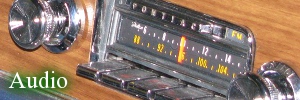















Industry Says Aluminum Adds to Car Safety |
|---|

|
John Birchard
Voice of America
Washington, D.C.
March 23, 2005
Audio Version 403KB RealPlayer
With the price of gasoline high and rising in the United States, and vehicle safety an ongoing concern, the Aluminum Association, a group of aluminum producers, recently presented a new study before a gathering of the Washington Automotive Press Association.
Weight is the enemy of fuel economy. The heavier a car or truck, the more energy is needed to move it. But most folks also believe weight is a key factor in crash safety. In a collision between two vehicles, most would argue that if you're an occupant in the heavier of the two, your chances of survival with fewer or no injuries are better.
But the aluminum industry begs to differ, having commissioned a study that evaluated how crashworthiness and crash compatibility between vehicles would be affected if a vehicle's weight was reduced or remained constant, but its size was maintained or even increased.
The study was conducted in light of potential changes to the U.S. government's fuel economy requirements. The fear has been that, if manufacturers are forced to produce vehicles that are more fuel-efficient, they will meet the requirement by making vehicles lighter, but less safe. The Aluminum Association's Tom Gannon says the new study indicates an alternative.
"You can produce the bigger cars and trucks that are desirable,” he said. “The sport utility segment is very popular. And you can do this without adding additional weight."
Mr. Gannon points out that, by using high-strength aluminum or other light-weight materials in the vehicle design and adding slightly longer energy-absorbing crush zones, the safety factor rises sharply.
"The best scenario, and the one likely to be pursued by many of the car companies, would be to actually make the vehicle longer, adding the crush zones front and rear without increasing the weight. There you see a significant reduction in injury and it's by a factor of 26 percent," he added.
Tom Gannon cites the German automaker Audi for its use of crush zones in one of its cars.
"This is a component that, in a crash, actually performs as a contained, predictable collaps,” he explained. “They made extensive use of this in their A8. It's a five-star rating [top achievement in government crash tests] vehicle. It's been considered to be one of the safest vehicles in the world."
How does aluminum compare with steel in a crash?
"In a crash, it's not just strength that you need to worry about, energy absorption is absolutely vital and here, aluminum pound-for-pound can absorb up to twice as much energy as compared to steel," he said.
The Aluminum Association says, by substituting their product for steel, for every 10 percent reduction in weight, a fuel saving of six to eight percent can be achieved. And, of interest to environmentalists, Tom Gannon points out nearly 90 percent of automotive aluminum is recovered and recycled.
"It's infinitely recyclable,” he added. “This material does not degrade as you return it back into a reusable form. And when you do return it back into a reusable form, you're only using about five percent of the original energy you used to produce that, so it's cost-effective and infinitely recyclable."
Aluminum is currently the third most-used material in automotive construction, behind steel and iron. The industry predicts it will surpass iron within the decade, as automakers foresee the need for vehicles that get greater fuel economy but are also safer than today's products.
